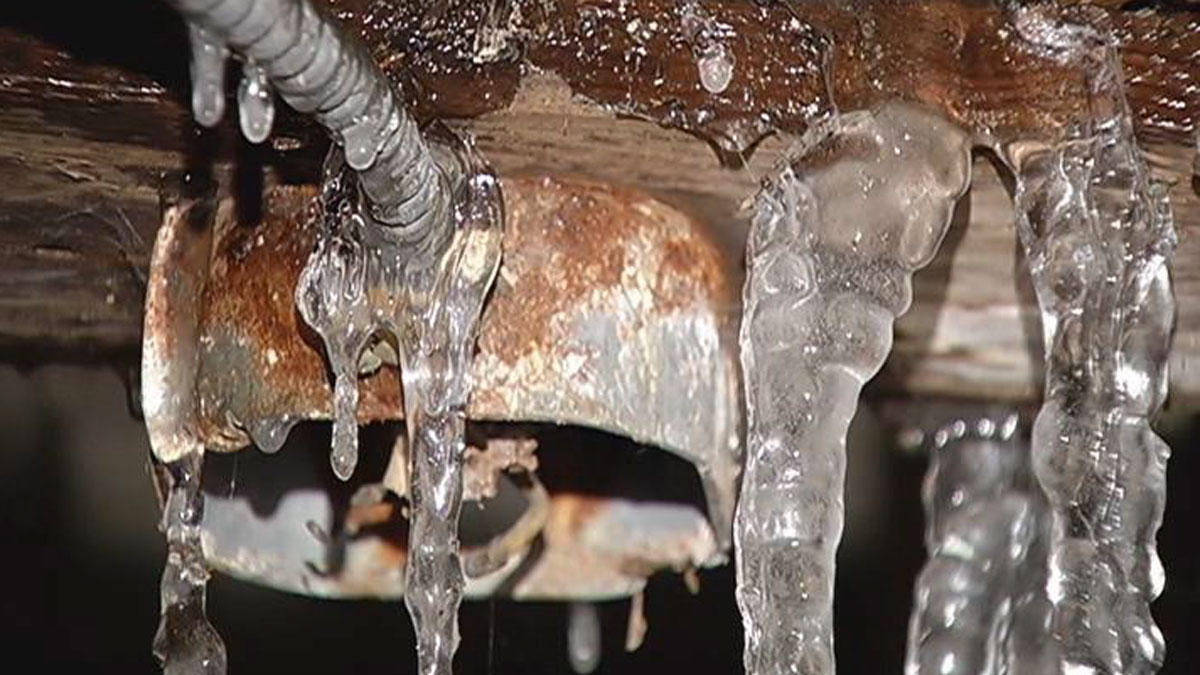Advice for Preventing Frozen Plumbing in Winter: Specialist Advice
Advice for Preventing Frozen Plumbing in Winter: Specialist Advice
Blog Article
Everybody will have their own way of thinking when it comes to Prevent Frozen Pipes .

Winter can damage your pipes, particularly by freezing pipes. Below's exactly how to stop it from taking place and what to do if it does.
Intro
As temperatures decline, the danger of icy pipes rises, possibly bring about pricey repair services and water damage. Understanding just how to prevent icy pipes is essential for homeowners in chilly climates.
Avoidance Tips
Insulating at risk pipes
Cover pipes in insulation sleeves or use warm tape to protect them from freezing temperatures. Concentrate on pipes in unheated or outside areas of the home.
Home heating methods
Keep indoor spaces appropriately heated, particularly locations with plumbing. Open closet doors to permit warm air to distribute around pipelines under sinks.
Just how to recognize frozen pipes
Search for reduced water circulation from taps, unusual odors or noises from pipes, and visible frost on subjected pipes.
Long-Term Solutions
Structural modifications
Take into consideration rerouting pipelines away from exterior wall surfaces or unheated locations. Add extra insulation to attics, cellars, and crawl spaces.
Updating insulation
Purchase top notch insulation for pipes, attic rooms, and walls. Proper insulation helps keep constant temperatures and reduces the threat of icy pipes.
Protecting Exterior Plumbing
Yard hoses and exterior faucets
Separate and drain yard hose pipes prior to wintertime. Install frost-proof faucets or cover outside taps with insulated caps.
Recognizing Frozen Pipes
What triggers pipelines to freeze?
Pipes freeze when subjected to temperatures listed below 32 ° F (0 ° C) for expanded periods. As water inside the pipes ices up, it increases, putting pressure on the pipe walls and potentially causing them to break.
Dangers and damages
Frozen pipelines can bring about water supply disruptions, property damages, and costly repair work. Burst pipes can flooding homes and create comprehensive architectural damages.
Indications of Frozen Pipeline
Determining frozen pipes early can prevent them from breaking.
What to Do If Your Pipelines Freeze
Immediate actions to take
If you believe frozen pipes, maintain faucets open to alleviate stress as the ice melts. Use a hairdryer or towels taken in hot water to thaw pipelines slowly.
Conclusion
Stopping frozen pipelines requires positive measures and fast responses. By comprehending the reasons, signs, and safety nets, house owners can protect their plumbing throughout winter.
5 Ways to Prevent Frozen Pipes
Drain Outdoor Faucets and Disconnect Hoses
First, close the shut-off valve that controls the flow of water in the pipe to your outdoor faucet. Then, head outside to disconnect and drain your hose and open the outdoor faucet to allow the water to completely drain out of the line. Turn off the faucet when done. Finally, head back to the shut-off valve and drain the remaining water inside the pipe into a bucket or container. Additionally, if you have a home irrigation system, you should consider hiring an expert to clear the system of water each year.
Insulate Pipes
One of the best and most cost-effective methods for preventing frozen water pipes is to wrap your pipes with insulation. This is especially important for areas in your home that aren’t exposed to heat, such as an attic. We suggest using foam sleeves, which can typically be found at your local hardware store.
Keep Heat Running at 65
Your pipes are located inside your walls, and the temperature there is much colder than the rest of the house. To prevent your pipes from freezing, The Insurance Information Institute suggests that you keep your home heated to at least 65 degrees, even when traveling. You may want to invest in smart devices that can keep an eye on the temperature in your home while you’re away.
Leave Water Dripping
Moving water — even a small trickle — can prevent ice from forming inside your pipes. When freezing temps are imminent, start a drip of water from all faucets that serve exposed pipes. Leaving a few faucets running will also help relieve pressure inside the pipes and help prevent a rupture if the water inside freezes.
Open Cupboard Doors
Warm your kitchen and bathroom pipes by opening cupboards and vanities. You should also leave your interior doors ajar to help warm air circulate evenly throughout your home.

We were made aware of that article on 6 Ways to Prevent Frozen Pipes from an associate on our other domain. Appreciated our posting? Please quickly share it. Help others discover it. I treasure reading our article about Preventing and dealing with frozen pipes.
This Resource Report this page